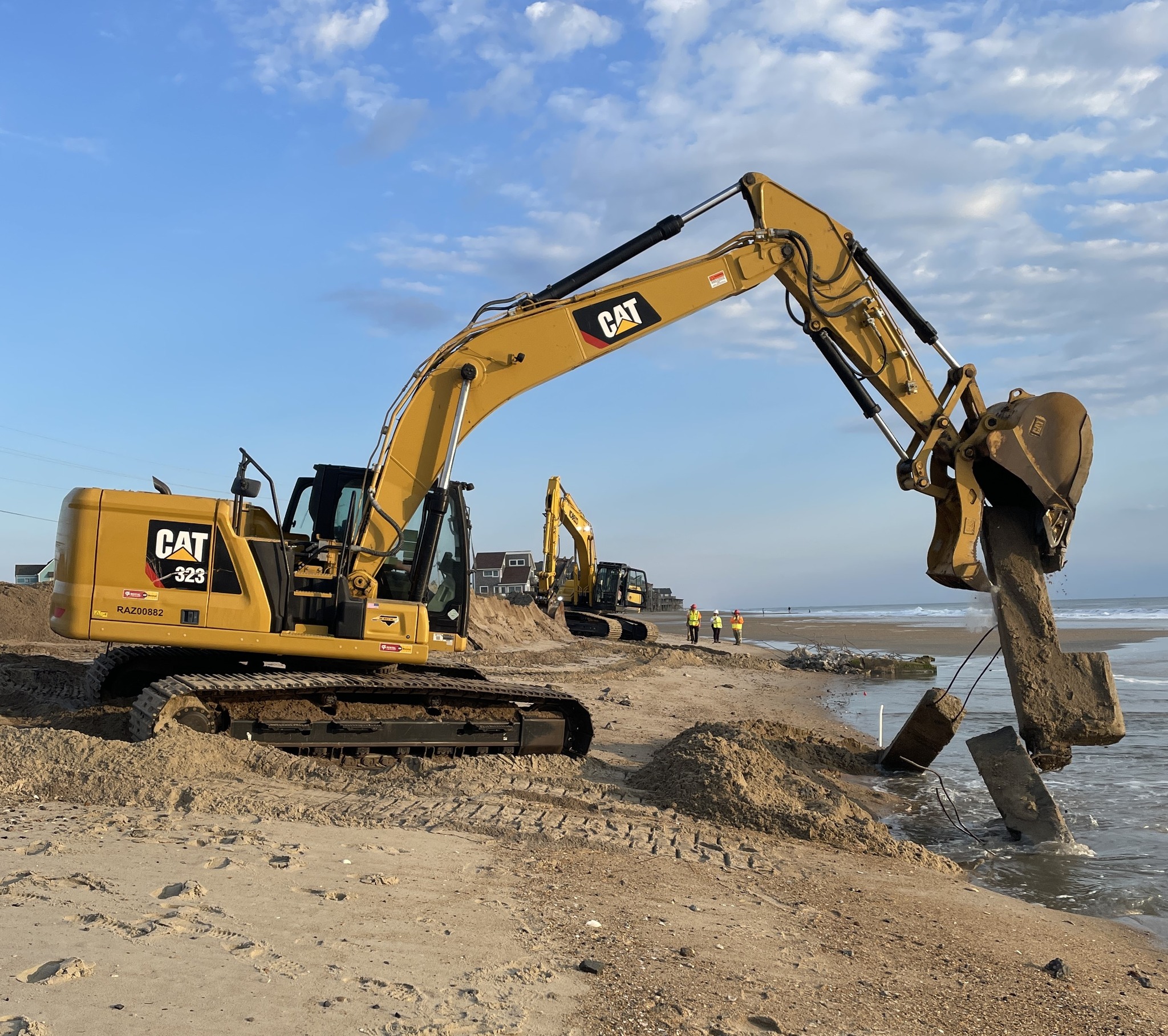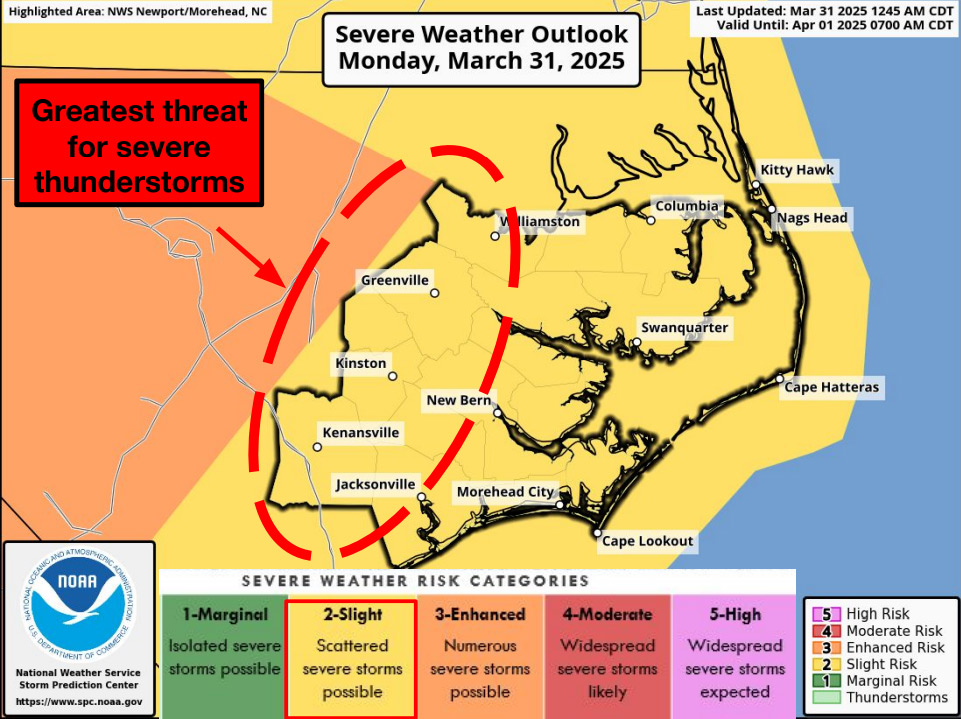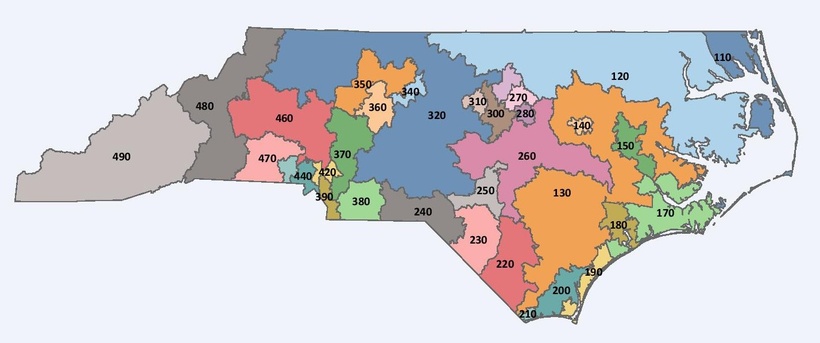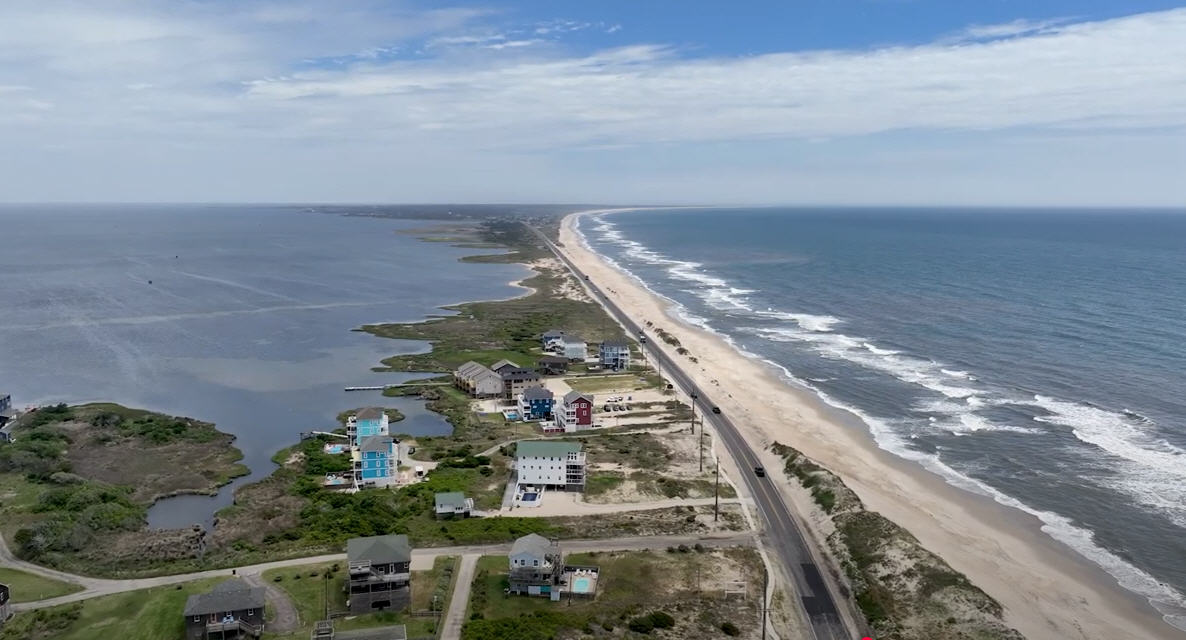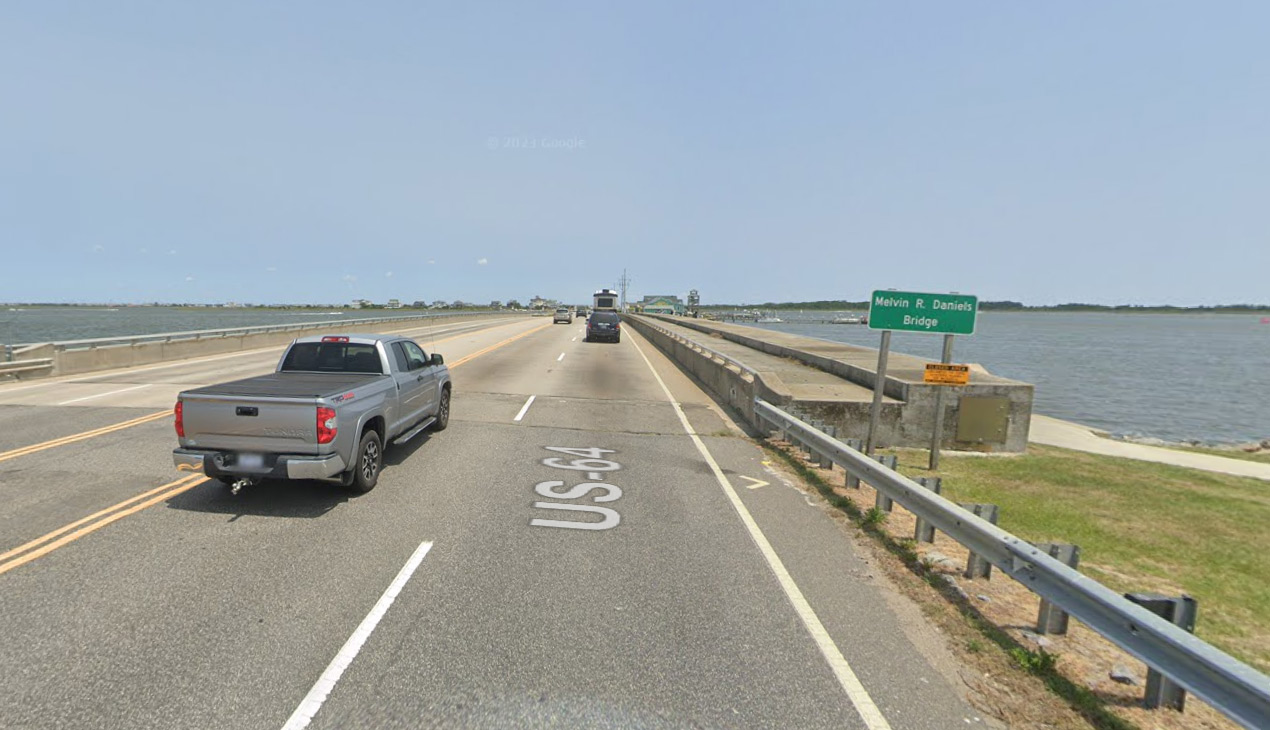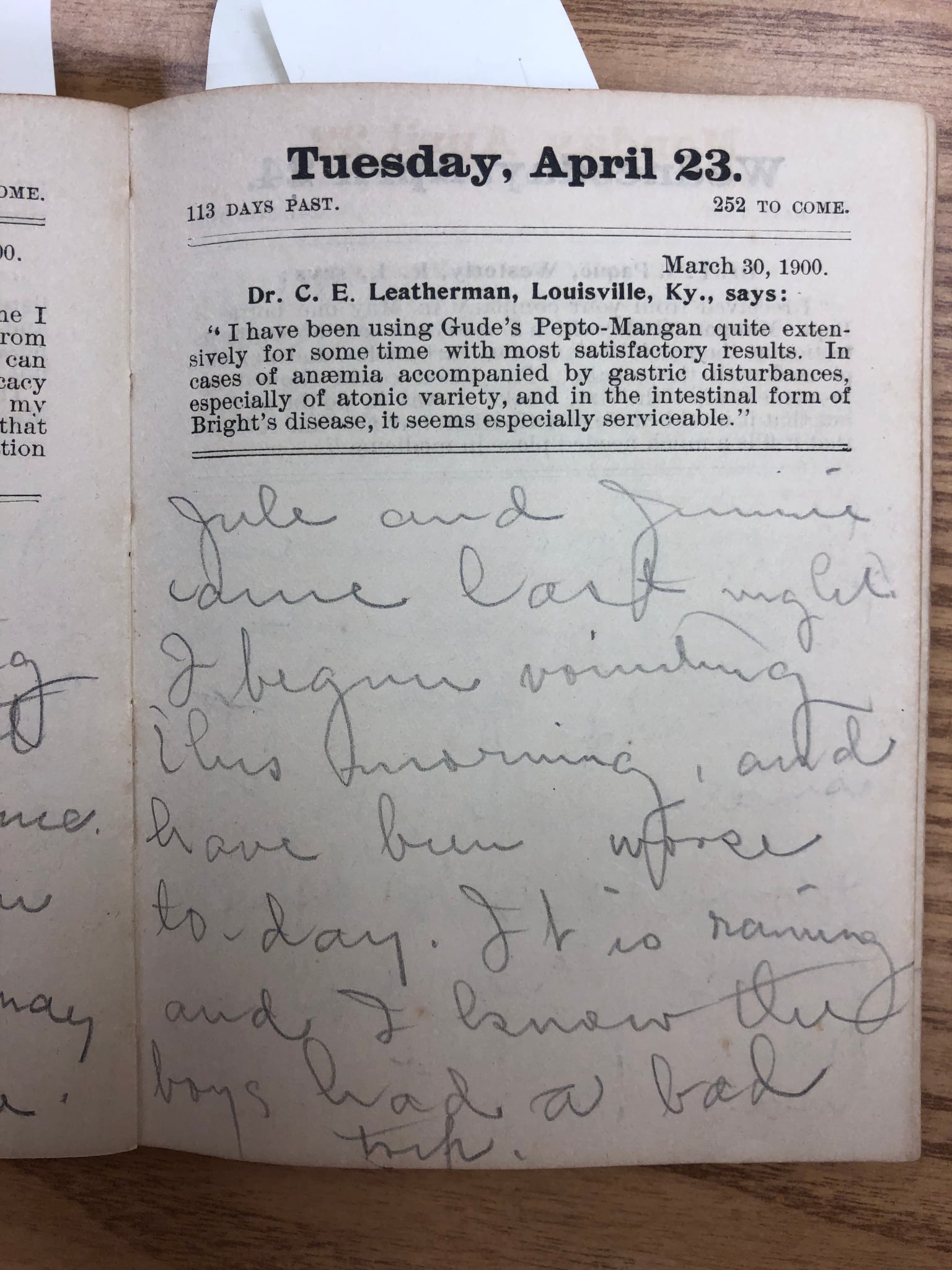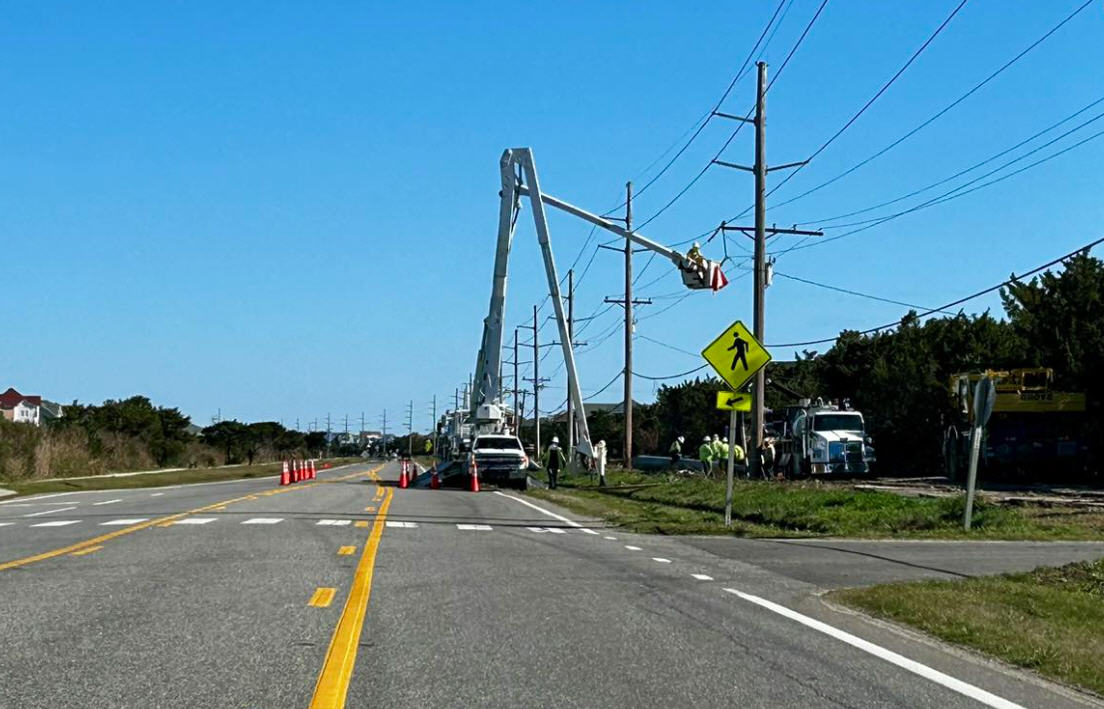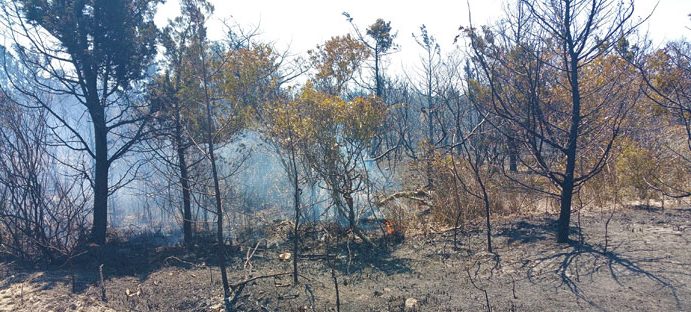More than 40 Cold-Stunned Sea Turtles Rescued on Friday Morning After Temperatures Drop
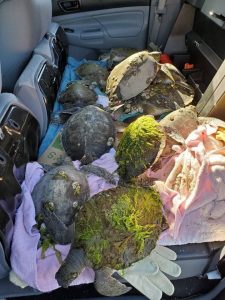
More than 40 cold-stunned sea turtles were found and transported to the Network for Endangered Sea Turtles (NEST) Rehabilitation Center on Friday morning after Pamlico Sound temperatures throughout Hatteras Island significantly dropped overnight.
The coordinated effort by local and northern Outer Banks volunteers is a regular endeavor during the winter months, when the occasional freeze can affect mainly juvenile sea turtles in the Pamlico Sound. Frank Welles, NEST Hatteras Island Coordinator, says that when a cold weather event occurs, up to two dozen local volunteers head to the Pamlico Sound waters to look for sea turtles that have been impacted by the cold.
“I monitor the wind and water temperatures, and when water temperatures in the sound dip below 50 degrees, that is when we start [looking],” says Welles. “And the water temperature was 41 this morning.”
NEST assists and encourages local volunteers in these seasonal turtle hunts because the Cape Hatteras National Seashore is essentially a hot spot for cold-stunned sea turtles. Many sea turtles break from their long seasonal migrations to feed and forage in the Pamlico Sound, but they become trapped and virtually comatose when the water temperatures drastically fall.
Lou Browning of Hatteras Island Wildlife Rehabilitation, who personally collected 13 cold-stunned sea turtles on Friday, says that Friday morning’s busy activity was fairly standard for this time of year.
“This was a normal cold-stunned turtle event,” says Browning. “The temperature dropped fairly low last night, and a little more the night before, and the temperature in the sound changes quickly with the air temperature –much faster than the ocean temperature does.”
“It’s mainly green sea turtles that are in the sound – juveniles – and when this occurs, they get caught and lose the ability to swim and move.”
This cold-stunned scenario can turn deadly, too, as once in an immobile and lethargic state, the sea turtles can have difficulty raising their heads above water to breathe, and can eventually drown.
This is exactly why a team of volunteers from all across the Outer Banks patrol the Pamlico Sound waters when a deep freeze occurs, and look for turtles that may be in trouble.
“This event was a little unusual in that we didn’t have as much onshore wind,” says Browning. “When this [situation] usually happens, it’s also blowing 20-40 mph out of the northeast, and it’s cold and miserable. The tide is high, and it’s hard to get into areas of the sound, because you’re walking in high boots or waders.”
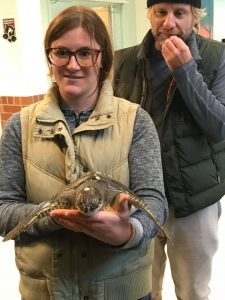
These typical windy weather conditions do have their benefits, however. A strong northeast wind can help push the sea turtles towards the shore, making them easier to retrieve. However, on Friday morning, it was a different environment altogether.
“This morning, there were cold waters, but a very low tide and light onshore winds. [The wind] still pushed the turtles closer to shore, but it was much easier walking, and not nearly as unpleasant as usual,” says Browning.
As cold-blooded reptiles, sea turtles derive heat from their surroundings, and when they become too cold, their metabolism slows, prohibiting them from moving and ultimately from migrating to warmer waters. This lack of motion can also make it challenging to determine whether the cold-stunned turtles are alive or dead.
The volunteers primarily search for stranded turtles along the soundside, covering private property in the villages and those not patrolled by the National Park Service, and often in their own neighborhoods. Welles, for example, lives near the Frisco Woods Campground, so he patrols his own backyard, as well as the long stretch of soundfront that borders this corner of Frisco.
Once a sea turtle is found, volunteers determine the type of turtle and its condition, and whether it is dead, alive, or injured, and they also measure the turtle and provide its location before transportation, The live turtles are then taken to the STAR Center in Manteo to undergo rehabilitation, and to eventually recover and be returned to the local shoreline.
This morning’s recovery of 40 sea turtles is certainly impressive, but Welles reports that it’s not altogether unusual.
“In 2016, we had an event we called the ‘Turtle Apocalypse,’ where we recovered 250 turtles in two days,” says Welles. “But to be in double digits after a [cold weather event] is not uncommon at all.”
As of Friday afternoon, all of the live cold-stunned sea turtles were on their way to the STAR Center to be rehabilitated before being released back into the wild. With temperatures forecast to increase throughout the weekend, Welles, Browning, and the other volunteers on Hatteras Island and beyond will likely enjoy a break from the action in the days to come.
In the meantime, however, Welles says that the public can help by watching for those icy cold days, and contacting the NEST hotline if a sea turtle is spotted.
“We are always looking for volunteers, and anyone can look for turtles and call us if they see one – you don’t have to be a registered volunteer to find them,” says Welles.
“Keep an eye out on the soundfront in the wintertime, and call us if you find one, alive or dead. These are endangered animals, so any and all data is important to us.”
- If you spot a cold-stunned sea turtle in or along the Pamlico Sound, contact the 24-hour NEST hotline at 252-441-8622.
- For more information on NEST, and to make a donation or learn about volunteer opportunities, visit http://www.nestonline.org/.
- For more information on Hatteras Island Wildlife Rehabilitation and / or to inquire about making a donation, visit their Facebook page at https://www.facebook.com/pg/Hatteras-Island-Wildlife-Rehabilitation-316636688958/.




